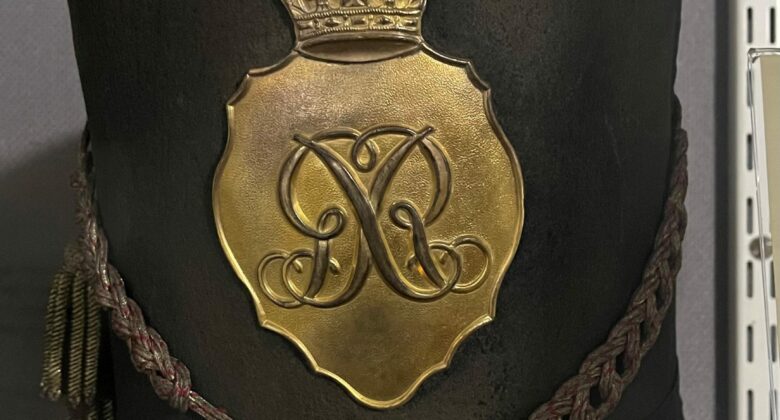First Pattern Shako 1801-1812
In 1801 non-commissioned Officers and Privates stopped wearing the tricorn cocked hat which has been in use since the 17th century. This new style of hat, known as a shako was issued in it’s place. The name shako comes from the Hungarian word cesako. Its design is based on a hat worn by the Hungarian Hussars who were influential across Europe and were copied widely for their military style and design. From 1801-1806 the shako was made of leather but in 1806, it was changed to felt to make it lighter to wear. The Cylindrical shape of the shako was very important as in the fog of gunpowder smoke it was vital that the British soldier could be distinguished from the French soldiers who wore a bell-top shako.
First pattern shakos often continued in use after 1812 and were only replaced when they were completely worn out. This means that only a very few originals have survived. Commissioned officers continued to wear the bicorn cocked hat until 1812.

Second Pattern Shako – Officers 32nd (Cornwall) Regiment 1812-1816
This was the first pattern of shako to be worn by both soldiers and regimental officers. Officers were previously distinguished by their bicorn hats. Although it was considerably lighter than the first pattern, the illusion of height was achieved by means of a false front piece. Known officially as the Belgique (from its Belgian origins), it later became popularly known as the Waterloo shako, most of the British infantry having worn it at that battle.
The example on display at Bodmin Keep, came from an antique dealer in France so may well have been worn at Waterloo.

These shako hats along with a wonderful display of military uniforms are on permanent display at Bodmin Keep, and coming this summer is a new exhibition ‘Suited and Booted’ which tells the history of the design and wear of military uniform through the generations.

